Many a time Ric had waxed lyrical about a mystical land where unbroken granite slabs sweep 500m into the sky. He enthused about immaculate rock quality, pure friction moves and spicy bolt-spacing. He also mentioned unfinished business, so it was only a matter of time before we made our way to the majestic Haegefjell in Norway. At the north western end of Lake Nisser in the Telemark region, Haegefjell’s South and South East faces must constitute one of the most impressive, unbroken shields of rock in Europe.
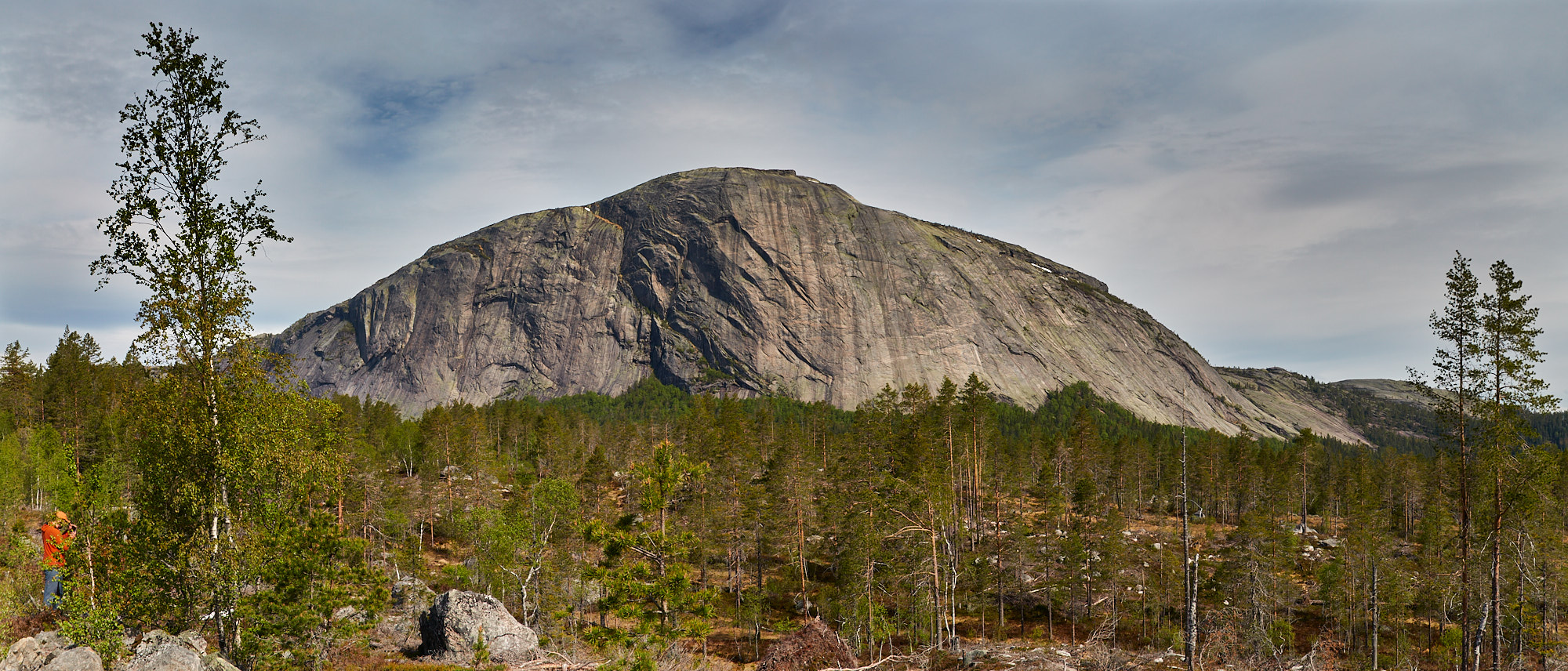
The mountain is home to a plethora of routes ranging across the grades and in a variety of styles, with a hybrid trad/sport approach usually taken with the protection. The glacial carving of the face means many routes begin with easy-angled polished slabs, which slowly ramp up and merge with steeper corners and cracks higher up the face. The classics, as you would expect, tend to follow defined features and lend themselves to mostly traditional protection, with the odd bolt where you really need it. If you’re lucky, the route may also have fully equipped belay/abseil stations.
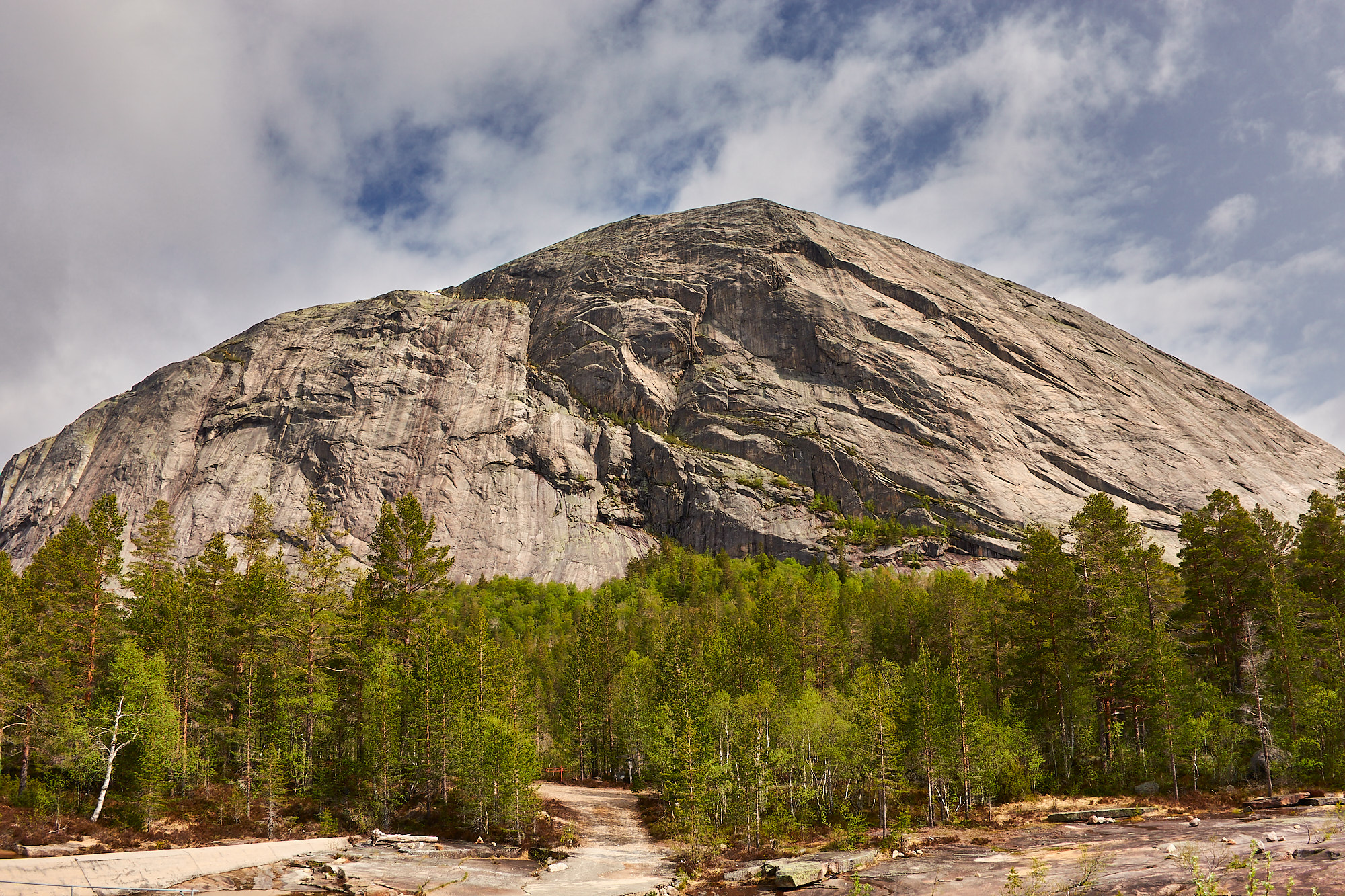
At the end of the gravel approach road (smoother than an Aberdeenshire B-road…) there is ample parking and space for lots of tents in clearings amongst the pine trees. A composting toilet, picnic tables and some fire-pits constitute the only facilities but it’s a great spot for base camp and zero hardship, assuming the weather and mosquitoes aren’t an issue. Amazingly, our trip lined up with the first major weather window of the season and despite a few residual seeps the routes were mostly dry. Climbing conditions were excellent but overnight temperatures were low and a cold wind in the mornings meant we usually started (and finished) late.
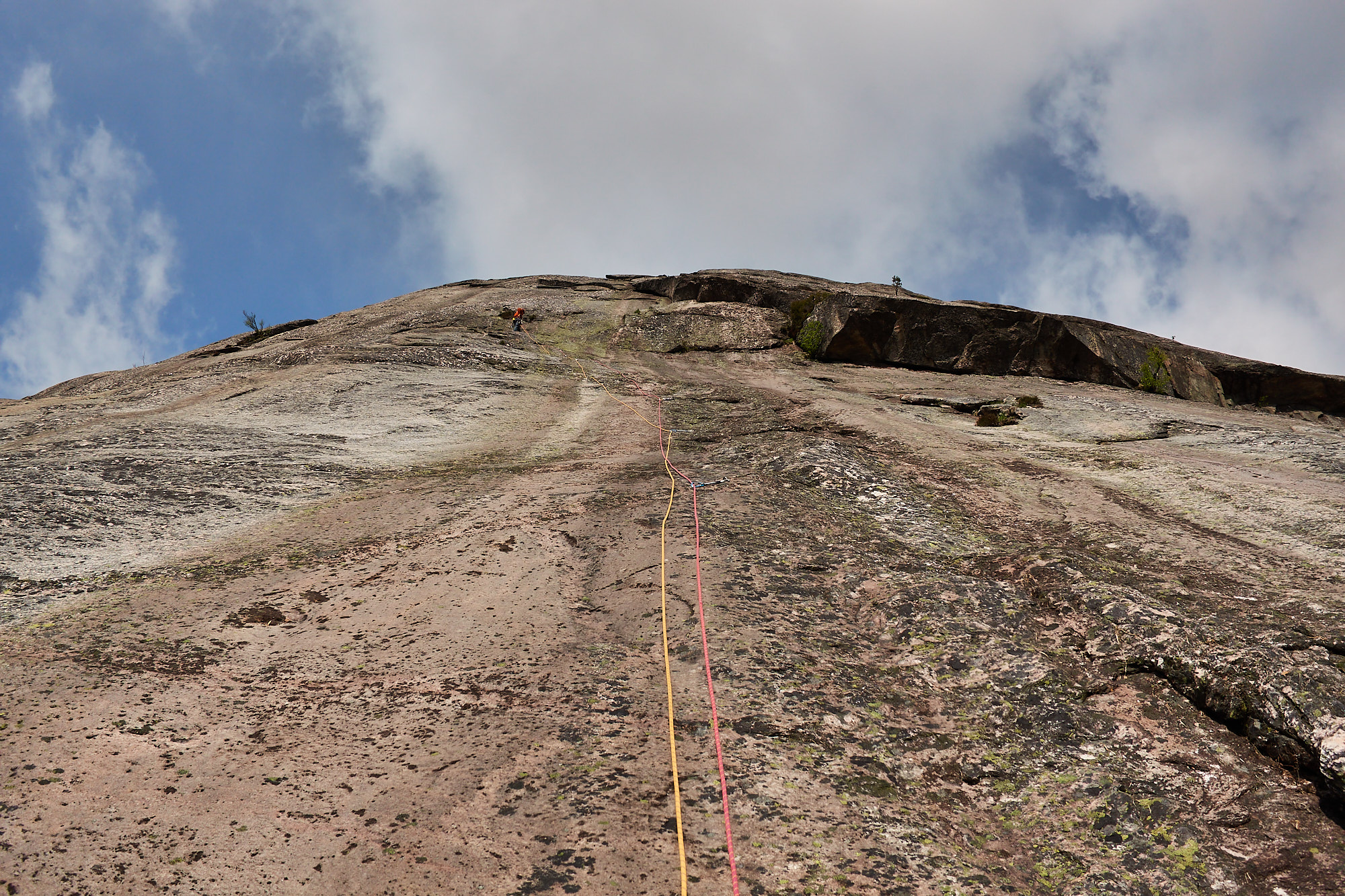

After a very late arrival and leisurely first morning, a low-drama shake-down route was required to get us going. Despite having done the route before, Ric graciously suggested we start with Agent Orange (n5+), which is a total classic of the crag and a good introduction to the local style. The route follows friction-slabs and lay-back corners on the right side of the South Face in eight long pitches of immaculate rock. It’s all good but pitches two, three and seven were the real highlights comprising the most technical climbing and some not insignificant run-outs…

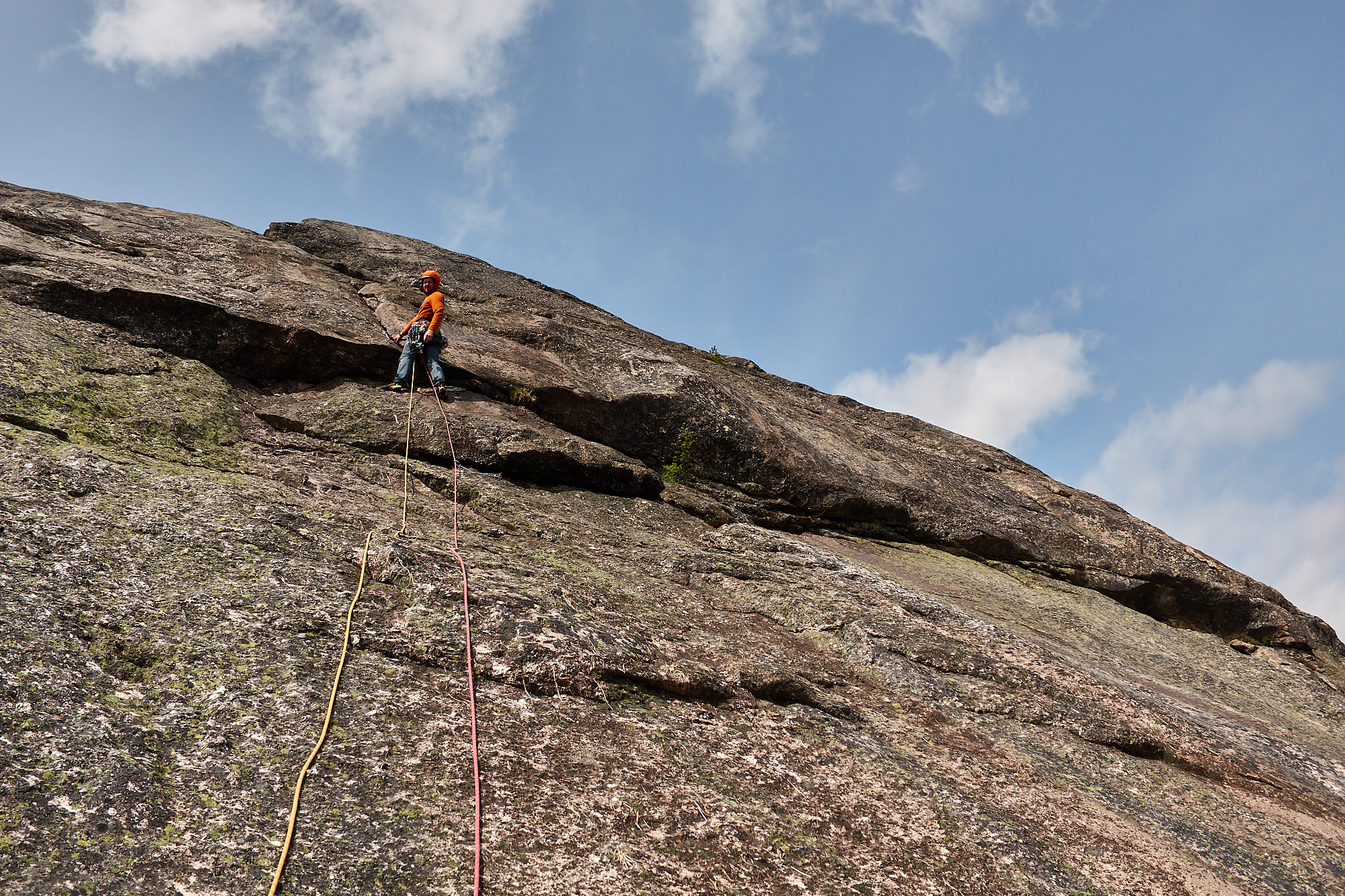
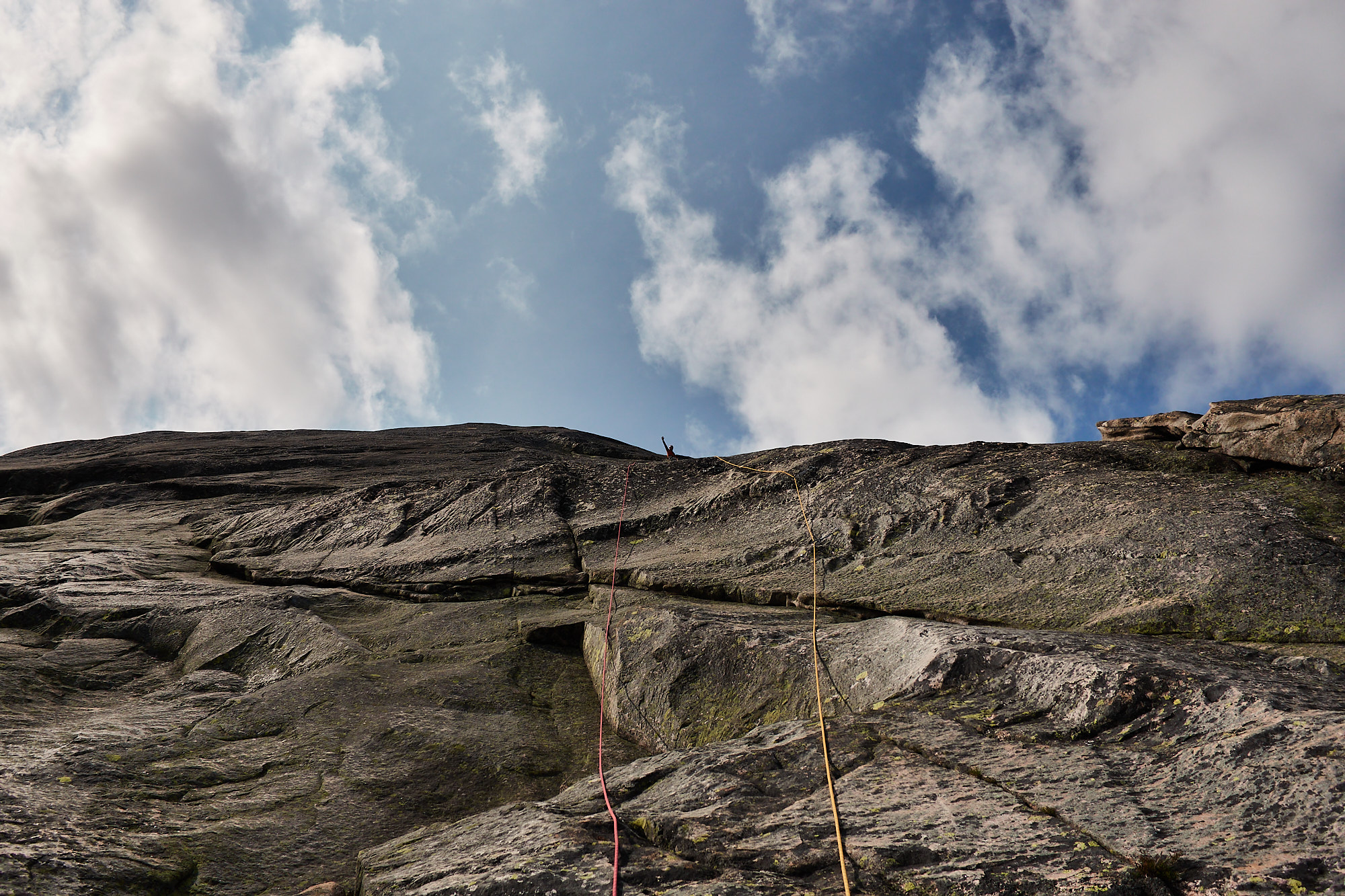
It’s hard to translate this style into UK grades but I thought VS 4c/5a felt about right, although it could feel HVS (despite the bolts) if you don’t like friction slabs! We played to our strengths (aka Ric led the friction slabs) and block led the route, enjoying seven pitches before deciding to abseil down using the fully equipped belays. This avoided the long walk off the top, through remaining snow patches, with the aim of setting ourselves up for a big one the following day.
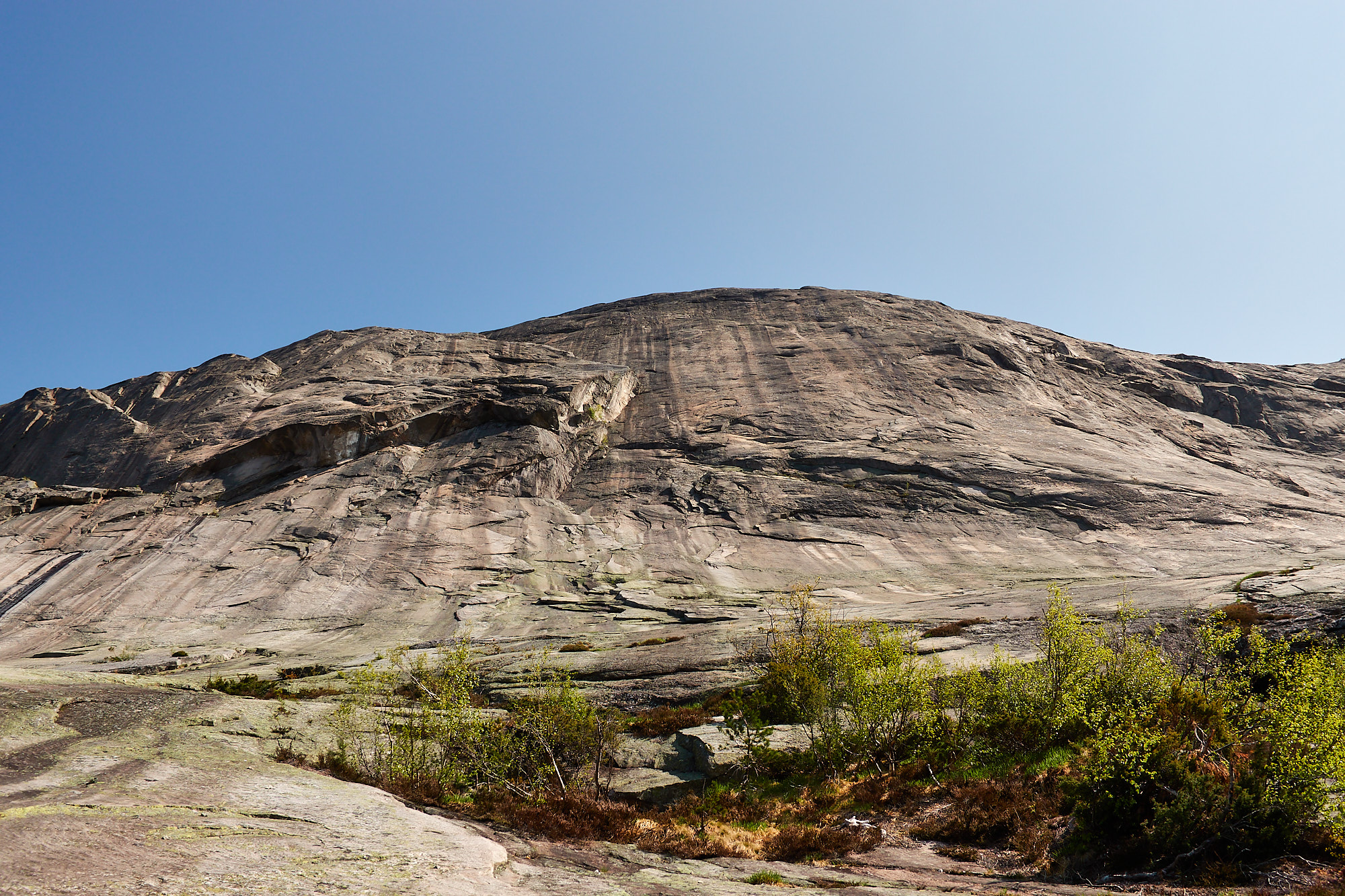
The initial plan for said big one was Mot Sola (n6-/HVS 5a), a classic trad route up a big corner system on the left side of the South Face, however, reports of wet streaks and polished cracks meant the chat at camp was that it was a fair bit trickier in the current conditions. We could see the wet streaks from the approach, so a last minute change in plan saw us gearing up below the next corner over, Haegar (n6+/E2? 5c). Ironically, we had substituted an easier damp route for a harder dry one, but we thought it would probably go…

A poor topo and description immediately had us questioning our life choices – with 80m of “easy” slab soloing out of the question for me, we roped up for two pitches (of about Severe!) to get to the start of the “proper” first pitch. Once into the meat of the route, the climbing and route-finding improved a lot; with pitch one taking a devious line up slabs following flakes and corners for 60m. Pitch two is another superb, long slab with moves that flow between pancake flakes and lead you to an abrupt impasse. Ric arranged a cluster of gear in the niche below and tip-toed boldly up the technical crux, pausing briefly to place a critical BD 00 micro-cam in a slot on the right side of a thin rail. The climbing is about f6b and a bit run-out until you get the micro-cam – we thought maybe E2 for this pitch alone.
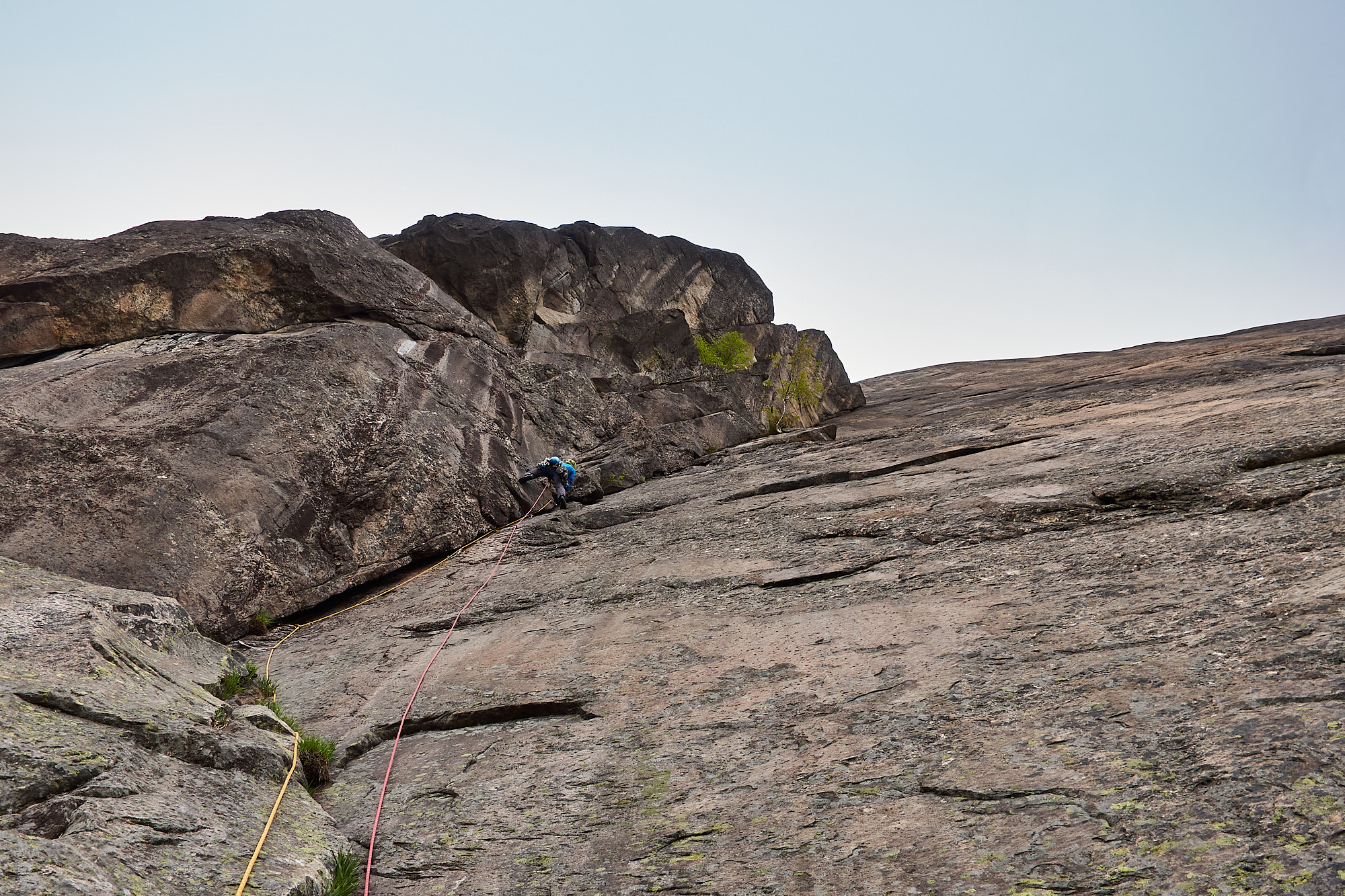
Once above the lower slabs the character of the route changed abruptly, with steeper lay-backing and bridging the order of the day. The next two pitches appear easy in the Rockfax guide but they are anything but and I was a bit surprised to have to deploy some effort (along with a BD #4 cam!) to scamper up the big corner. Nearing the tree, I took a direct line up the hanging corner with finger-tip lay-backing and smeary feet providing an exhilarating finish to the pitch. A corner to the right may have been easier but it looked dirty and unprotected. Another shorter and more awkward section of the same style debouched us below the crux pitch – a steep leaning corner crack capped with an intimidating bulge.
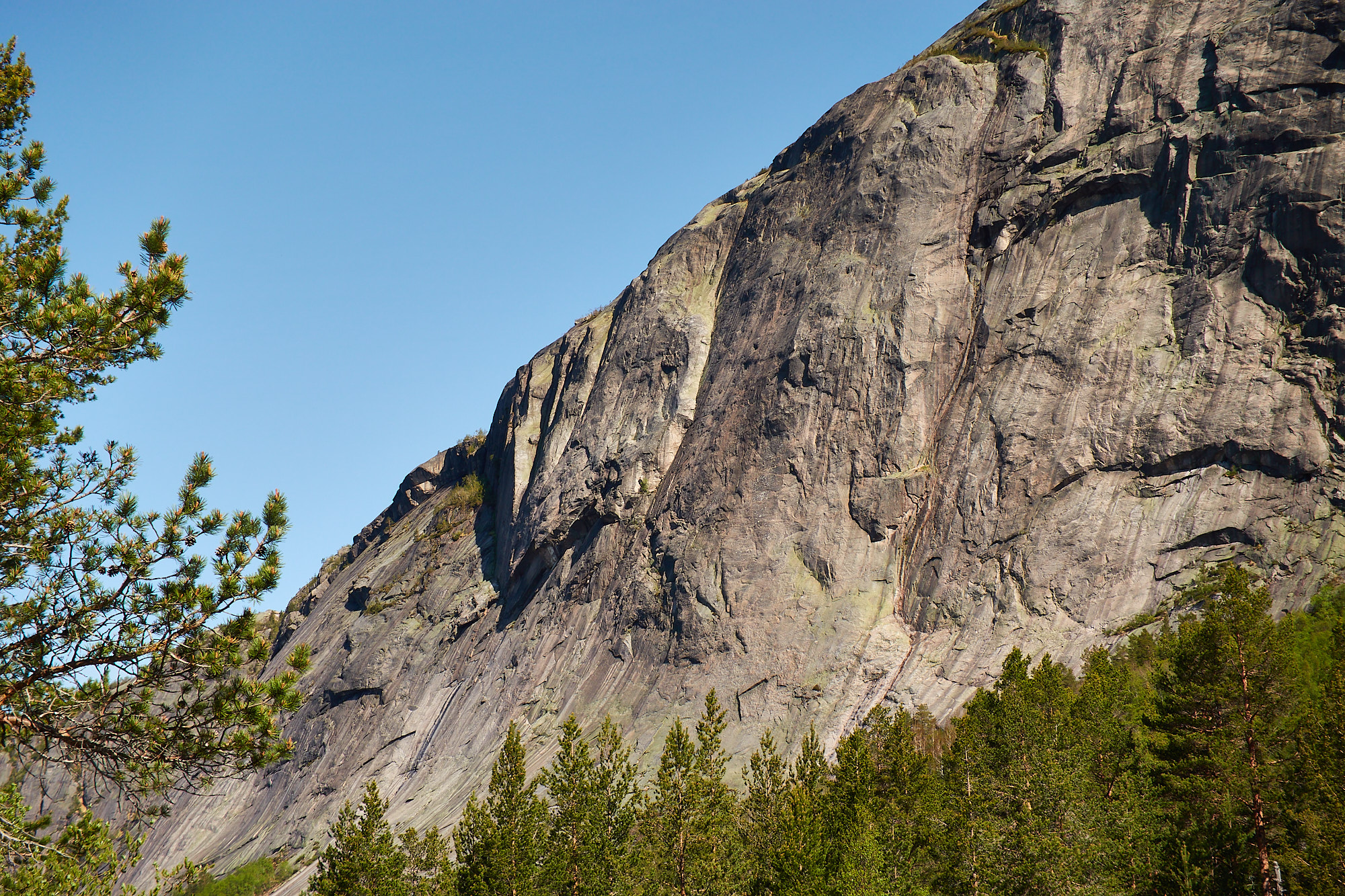
At this point things began to unravel slightly; Ric made good progress up the start of the corner but ground to a halt where the crack pinched shut for a few metres. Some aiding, some falling and much grunting ensued and I began to get concerned. We had no jackets or head-torches, were halfway up a 500m route and our late start and slow progress meant benightment was a real possibility. Feeling a bit spanked we decided to bail, but with no equipped belays we needed to leave a bunch of gear to get down. Thankfully, another team climbed the route the following day and they were kind enough to retrieve our kit – legends!
Feeling a bit dejected but not devastated (we’d given it a good shot after all) we vowed to return another time. For the next day we needed something a bit more chill, with the odd bolt perhaps, but still challenging enough: Reven (n6-) fit the bill nicely, following a striking crack line on the left side of the South East Face.
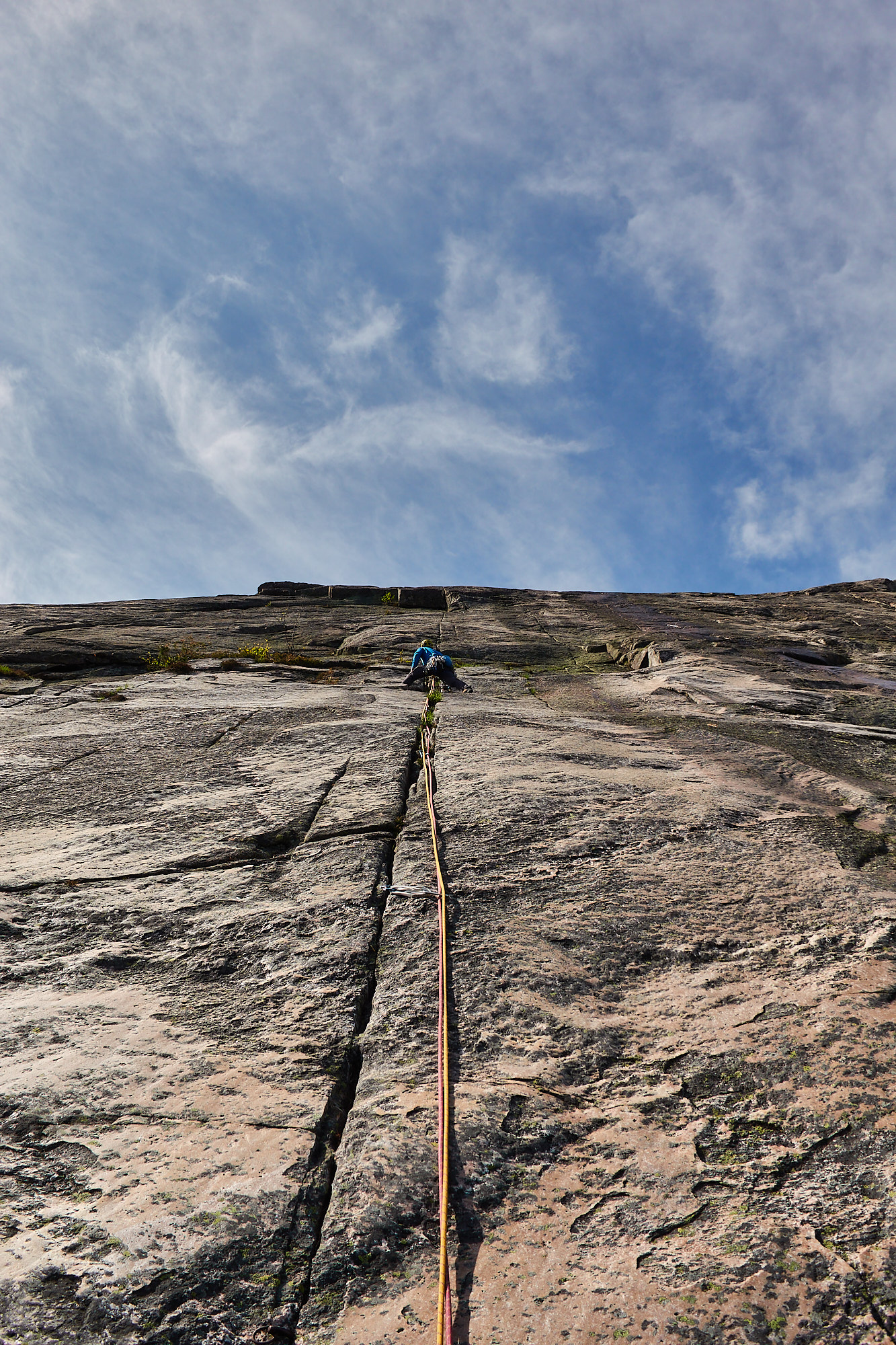
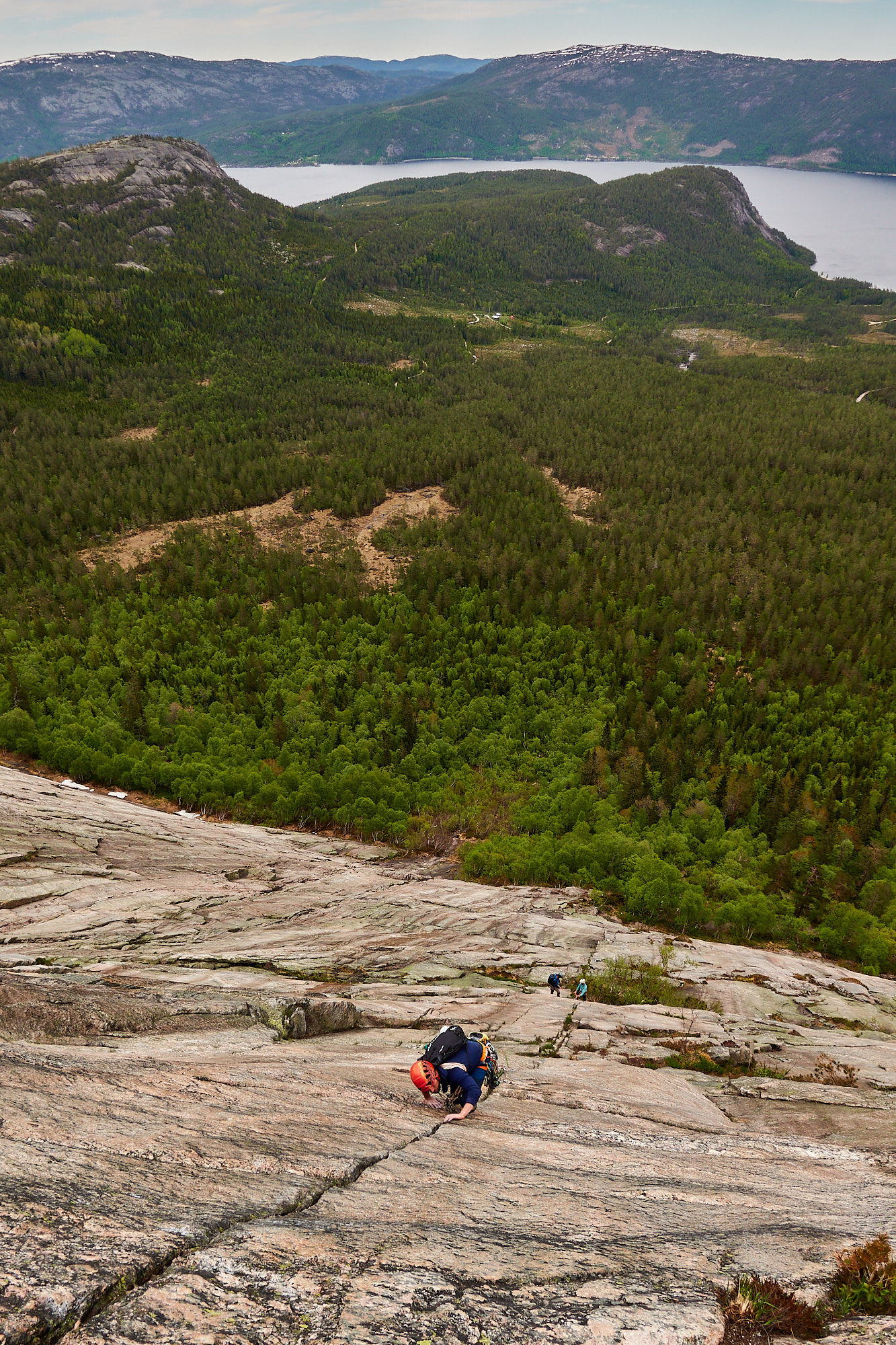
Barring a false start thanks to a guidebook misprint, the route went smoothly, although we split the crux fourth pitch cracks into two, making use of an intermediate bolted anchor. Ric put in a brilliant lead on this pitch and floated up the finger crack. More enjoyable slabs and overlaps followed before we made use of the fully equipped belays to rap the route.
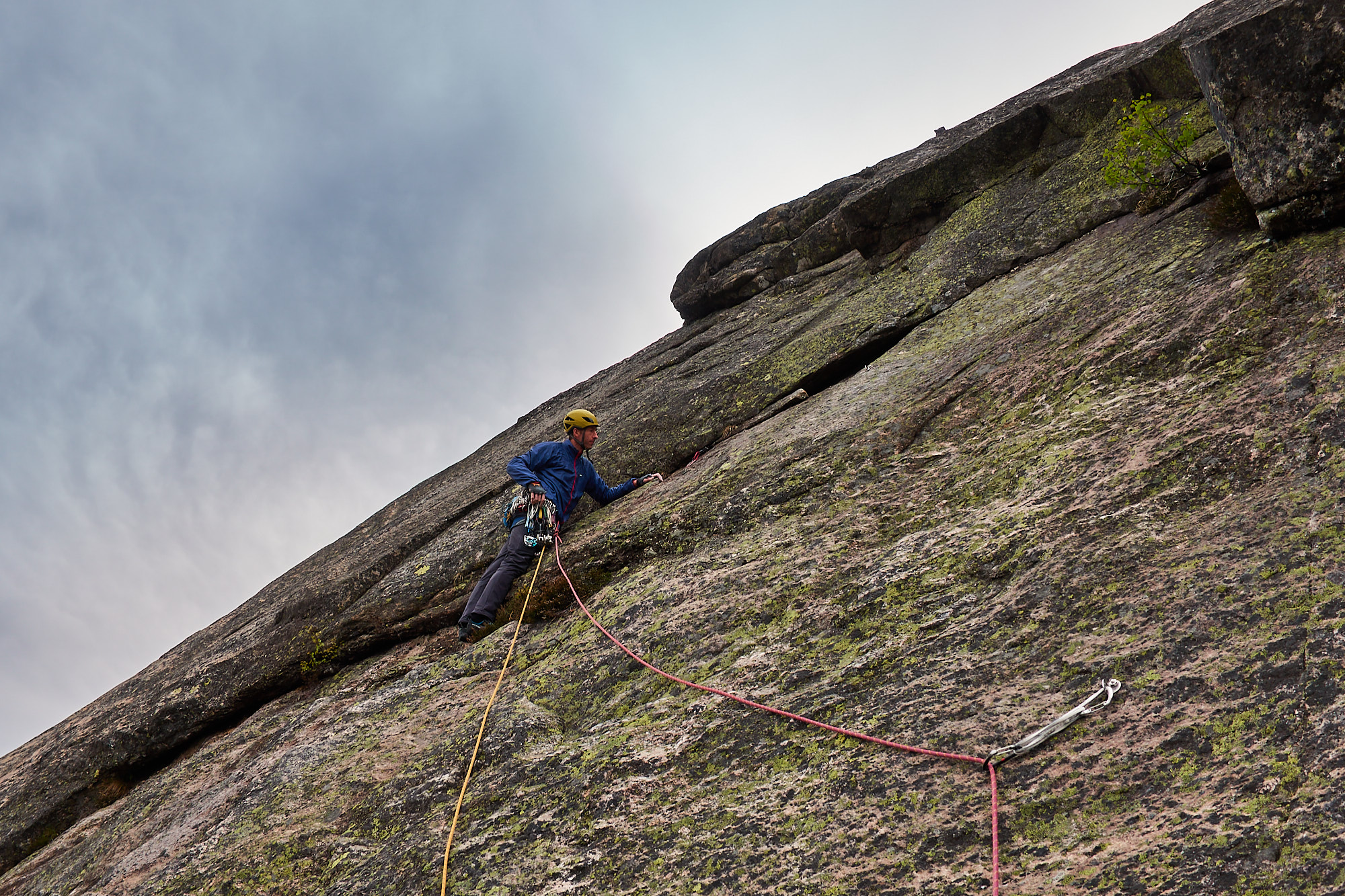
After three grand days out we headed back to Oslo via a brilliant sport climbing crag called Sundenuten (thanks Adam for the recommendation and guide!), just in case we weren’t ruined enough already! Given business on Haegar is still well and truly unfinished (and not even started on Mot Sola), I expect we’ll be back…
